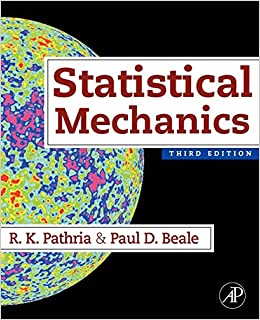A mechanical system consisting of (n) identical masses (each of mass (m) ) connected in a straight
Question:
A mechanical system consisting of \(n\) identical masses (each of mass \(m\) ) connected in a straight line by identical springs (of stiffness \(K\) ) has natural vibrational frequencies given by
\[
\omega_{r}=2 \sqrt{\left(\frac{K}{m}ight) \sin \left(\frac{r}{n} \cdot \frac{\pi}{2}ight) ; r=1,2, \ldots(n-1) .}
\]
Correspondingly, a linear molecule composed of \(n\) identical atoms may be regarded as having a vibrational spectrum given by
\[
v_{r}=v_{c} \sin \left(\frac{r}{n} \cdot \frac{\pi}{2}ight) ; r=1,2, \ldots(n-1),
\]
where \(v_{c}\) is a characteristic vibrational frequency of the molecule. Show that this model leads to a vibrational specific heat per molecule that varies as \(T^{1}\) at low temperatures and tends to the limiting value \((n-1) k\) at high temperatures.
Step by Step Answer:






